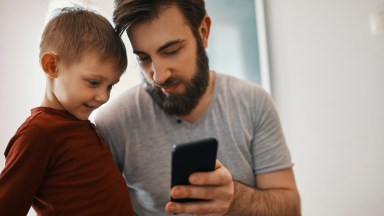From tuning radio dials during a morning commute to peeking at fantasy football statistics over a lunch break at work, consumers have a platform preference depending on the time of day according to Nielsen’s Q2 2015 Total Audience Report.
The report found that, as consumers’ media palate ebbs and flows throughout the day, so too does the share of consumers’ time on these different devices. For example, during the weekdays, radio usage is greatest between 6:00 a.m.-6:00 p.m., with a 40% device share during the heaviest usage hour at 7:00 a.m.—surpassing even television. However, between 6:00 p.m.-6:00 a.m., television accounts for at leasthalf of all media use, peaking at 9:00 p.m. when it makes up almost two-thirds of the total audience.
But it’s not just traditional platforms that see these hourly trends. TV-connected devices (such as game consoles or devices like Roku or Apple TV) increase their share of the average audience into the late evening.
Video usage has grown across the week on digital platforms (i.e., PCs, smartphones or tablets), rising nearly 20% overall year-over-year among adults! And the greatest percent increase in digital video usage has been during the overnight and early morning hours, when the convenience of grabbing a nearby device might overpower a desire to reach for a remote. In fact, between 5:00 a.m. and 8:00 a.m., usage in this regard has increased 38%. In terms of user uptick, the 9:00 p.m. hour has shown the greatest absolute growth in digital platform use, with an increase of 700,000 adults using a digital platform between May 2015 from May 2014.
“Knowing how many consumers are connecting to both traditional and digital platforms, as well as the share these platforms have during each hour of the day, really highlights the fact that ALL of them are put to use,” says Glenn Enoch, senior vice president, audience insights, Nielsen. “Consumers don’t see media use as an ‘either/or’ proposition. They leverage all ways to connect with content at different times of the day. Knowing these usage patterns this can really give the industry a clear line of sight on being able to take advantage of these patterns,” adds Enoch.
When it comes to the user themselves, tech tastes differ as well.
In terms of race and ethnic background, Hispanic consumers are mostly likely to reach for a smartphone, and this reach also drives usage amounts. Hispanic consumers’ weekly time spent on both app/web on a smartphone outpaces the next highest group (Black consumers) by over an hour-and-a-half. Hispanic consumers also lead the field in terms of weekly time spent using video on a smartphone as well, boasting 8 more minutes per week than black consumers and 12 more minutes than Asian-American consumers.
By knowing these differences in media and consumption habits—be it by hour, age or race/ethnicity—can give agencies, marketers and programmers alike a clearer path to their best consumers.
For more insights, download our Q2 2015 Total Audience report.



